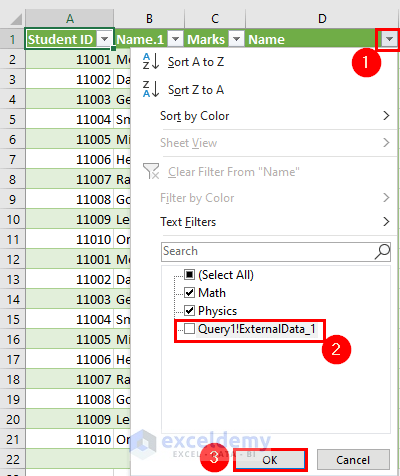5 Easy Ways to Merge Excel Sheets Quickly

Combining Excel Sheets with Speed and Ease

If you often deal with multiple Excel sheets for data management, knowing how to merge them efficiently can save you a lot of time. Here, we'll walk through five straightforward methods to combine your Excel spreadsheets seamlessly.
1. Consolidate Sheets Using Power Query

Power Query in Excel provides a powerful way to merge multiple Excel files. Here's how:
- Open a new Excel workbook.
- Go to the Data tab, click Get Data > From File > From Folder.
- Select the folder containing your Excel files and load the data.
- In the Power Query Editor, expand the Content column by clicking the double arrow.
- Select Combine & Transform Data, choose how you want to merge the files (Append or Merge) and follow the prompts.
- Once the data is combined, click Close & Load to load the merged data into your Excel sheet.
⚙️ Note: Power Query is available in Excel 2010 and later versions with some editions requiring a separate download or subscription.
2. Using the Move or Copy Sheet Function

For small numbers of sheets:
- Right-click on the sheet tab you want to move.
- Select Move or Copy....
- In the dialog box, choose where to move or copy the sheet. You can copy by holding Ctrl while selecting the destination workbook.
- Repeat for each sheet, or if you need to merge data from the same workbook, you can also use the Consolidate feature.
3. Using Consolidate Feature for Summing Data

Consolidate is great for summing or combining data:
- Open the workbook where you want to merge the data.
- Select a cell where you want the consolidated data to begin.
- Go to Data > Consolidate.
- Choose the function you need (SUM, AVERAGE, etc.) and select the ranges from other sheets you want to consolidate.
- Set up options like creating links to source data and click OK.
4. VBA Macro for Advanced Users

If you're comfortable with VBA, here's a simple script:
Sub CombineSheets()
Dim ws As Worksheet, wbDest As Workbook, wbSource As Workbook, rngData As Range, FirstSheet As Boolean
Set wbDest = ThisWorkbook
FirstSheet = True
For Each ws In wbDest.Worksheets
If ws.Name <> ActiveSheet.Name Then
If FirstSheet = False Then wbDest.Worksheets(ws.Index).Move After:=wbDest.Sheets(wbDest.Sheets.Count)
FirstSheet = False
End If
Next ws
' Loop through all open workbooks
For Each wbSource In Application.Workbooks
If wbSource.Name <> wbDest.Name Then
For Each ws In wbSource.Worksheets
ws.Copy After:=wbDest.Sheets(wbDest.Sheets.Count)
Next ws
End If
Next wbSource
MsgBox "All sheets have been merged into " & wbDest.Name & ".", vbInformation
End Sub
Run this macro to move all sheets from other open workbooks into the active workbook.
5. Third-Party Tools

There are tools like Ablebits Ultimate Suite, Kutools for Excel, or XLSTAT that offer solutions for merging Excel sheets:
- Download and install the tool.
- Follow their specific instructions to select and merge your Excel files.
Final Summary
Merging Excel sheets doesn’t have to be a tedious task. Whether you’re using the native functionalities within Excel or exploring third-party solutions, there’s a method suitable for everyone, from beginners to advanced users. By implementing any of these techniques, you’ll improve your workflow efficiency, making the handling of data across multiple sheets much more manageable and less error-prone.
What is the easiest method to merge Excel sheets?

+
The easiest method, especially for beginners, is using the ‘Move or Copy’ function as it requires minimal setup and technical knowledge.
Is it possible to automate the merging of Excel sheets?

+
Yes, using VBA macros can automate the merging process, but it requires some knowledge of VBA scripting.
Can I merge sheets with different structures or formats?

+
Yes, Power Query and third-party tools are particularly useful for merging sheets with different formats, allowing for transformation and mapping during the merge process.